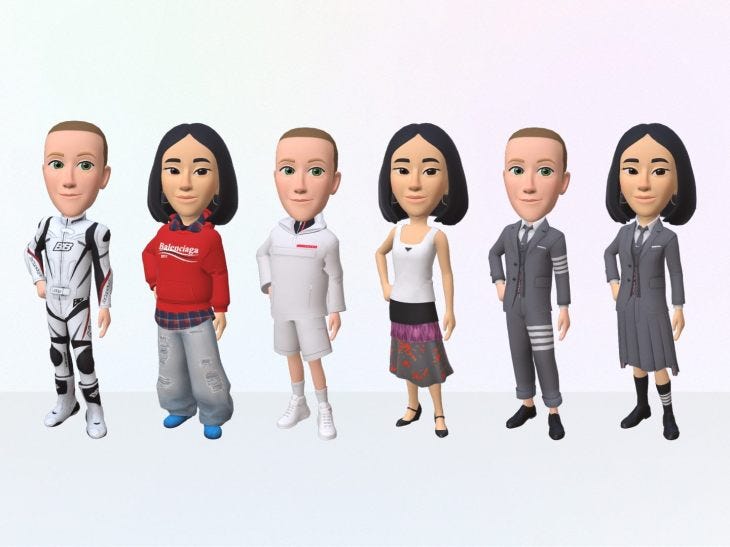Fashion Finally Has the Upper Hand with Mark Zuckerberg
Zuckerberg needs the fashion industry to realize his metaverse dreams. Yet his work on wearable tech so far doesn’t exactly inspire confidence.
Thank you for subscribing to Back Row, fashion’s fastest growing independent newsletter. If you like this story, please forward it to your friends and tap the heart at the top of this post. If you are new here, don’t forget to subscribe to get more stories like this sent to your inbox around twice a week. This newsletter is currently free to read.
Well LOL you guys – Mark Zuckerberg finally changed from his crappy hoodie into something more billionaire-like – a Thom Browne suit! Get that Met Gala invite, Zuck!
Only, he isn’t flashing his actual ankles in paparazzi photos in St. Tropez (he sadly doesn’t appear to have attended Ari Emmanuel’s wedding, according to Vogue’s truly extensive reportage) or at a red carpet at, say, this week’s NFT NYC conference. And in fact, he isn’t wearing Thom Browne at all – his avatar is. And he’s only advertising his virtual #ootds with the hope of extracting more money from the public when Meta’s avatar store launches this week.
Featuring looks by Browne, Prada, and Balenciaga – prices to be announced – users can buy clothes from the virtual store in Facebook, Instagram, and Messenger to style their avatars. In a statement, Zuckerberg said, “Digital goods will be an important way to express yourself in the metaverse and a big driver of the creative economy. I’m excited to add more brands and bring this to VR soon too.”
We could do worse than turn to another billionaire, Bernard Arnault, who runs LVMH, for some thoughts. “At this stage, we are very much in the real world, selling real products,” he said in January during an earnings call. “We are not interested in selling virtual sneakers for 10 euros. We’re not into that.” However, he left the door open, adding, “There may be relevant applications, but we have to see what universes might actually be profitable.”
After all, virtual fashion checks some appealing boxes: it’s actually sustainable, it’s high margin since it costs almost nothing to produce, and it probably sounds to a lot of older executives like the type of thing that will appeal to people much younger than Mark Zuckerberg.
Keep reading with a 7-day free trial
Subscribe to Back Row to keep reading this post and get 7 days of free access to the full post archives.



